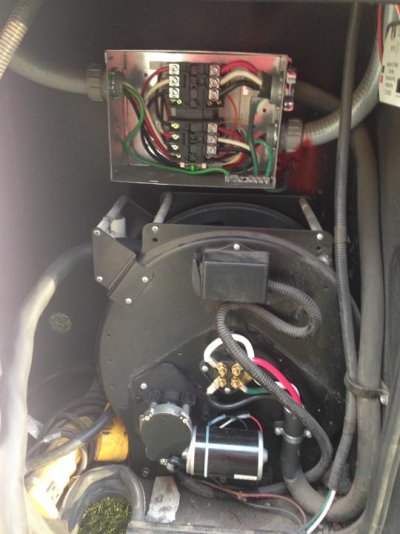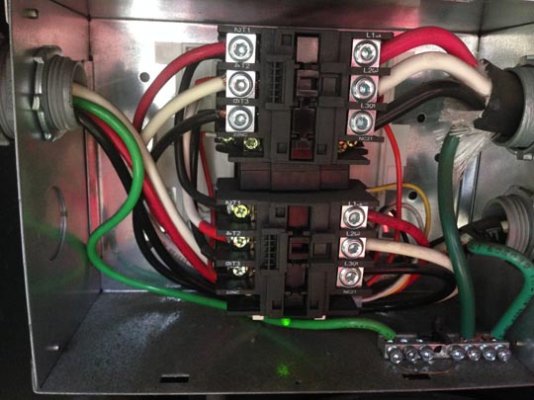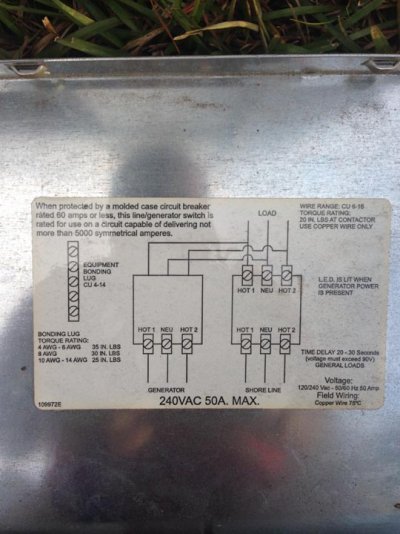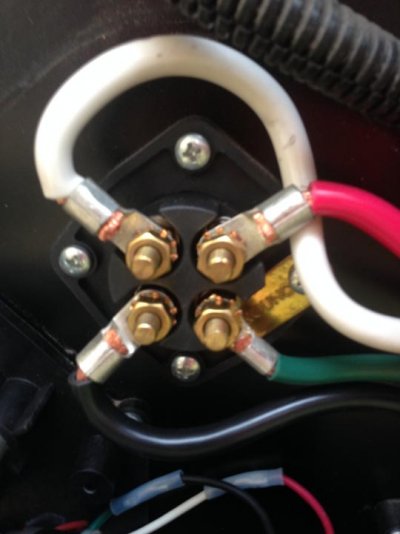Kim (skyking4ar2) Bertram
Moderator Emeritus
Short version of the problem - we plugged into a 50 amp pedestal at Escapees in Livingston, and instead of transferring power, the 50 amp breakers at the pedestal popped. In three and a half years in this coach, that has never happened. Tried it again, breakers tripped. Taking a chance, tried the dogbone for the 30 amp, no joy. Then find out from the neighbor, "oh, the guy last night had a problem there!". We moved to yet another site, same deal.
I am not an electrician in any lifetime, but had a transfer switch in my previous coach which had a bad relay that you could pop with a screwdriver handle and fire up. But that board was exposed, where this one is a Progressive Dynamics PD-52 in a box which looks like it has a removable cover.
Given that the generator side still works fine, i.e. the generator fires us and lights the coach, and charges the batteries, is there another breaker at the inverter (Magnum 2500 pure sine wave) that could be tripping? When I recently had all my batteries replaced and a battery monitor installed, something similar happened, but I did not see what the tech did, possibly at the converter to remedy this.
If there is a simple diagnostic procedure to determine where my issue is, I'd love to hear it. We are crossing the country, now in Louisiana with 80 degree temps and 90 percent humidity and momma ain't happy boondocking. We just left the cool of the warm desert with cold nights and there is no joy in Coachville.
Appreciate your thoughts.
Kim
I am not an electrician in any lifetime, but had a transfer switch in my previous coach which had a bad relay that you could pop with a screwdriver handle and fire up. But that board was exposed, where this one is a Progressive Dynamics PD-52 in a box which looks like it has a removable cover.
Given that the generator side still works fine, i.e. the generator fires us and lights the coach, and charges the batteries, is there another breaker at the inverter (Magnum 2500 pure sine wave) that could be tripping? When I recently had all my batteries replaced and a battery monitor installed, something similar happened, but I did not see what the tech did, possibly at the converter to remedy this.
If there is a simple diagnostic procedure to determine where my issue is, I'd love to hear it. We are crossing the country, now in Louisiana with 80 degree temps and 90 percent humidity and momma ain't happy boondocking. We just left the cool of the warm desert with cold nights and there is no joy in Coachville.
Appreciate your thoughts.
Kim




